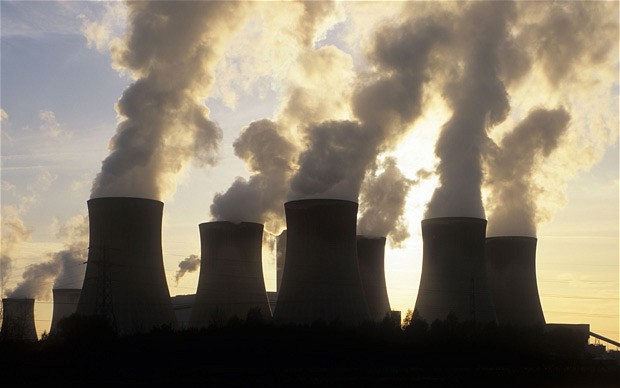Tightening the EU emissions trading system (EU ETS) in line with the EU Green Deal would dramatically speed up the decarbonisation of Europe’s power sector – and likely cause a demise of the coal industry.

In a new study by a team of researchers from Potsdam, Germany has quantified the substantial shifts Europe’s electricity system is about to undergo when the newly decided EU climate target gets implemented. Higher carbon prices, the authors show, are not only an inevitable step to cut emissions – they will also lead much faster to an inexpensive electricity system powered by renewable energies.
“Once the EU translates their recently adjusted target of cutting emissions by at least 55% in 2030 in comparison to 1990 into tighter EU ETS caps, the electricity sector will see fundamental changes surprisingly soon,” says Robert Pietzcker from the Potsdam-Institute for Climate Impact Research (PIK), one of the lead authors.
“In our computer simulations of the new ambitious targets, this would mean that renewables would contribute almost three fourths of the power generation already in 2030 and we would reach zero emissions in the power sector as soon as by 2040. Once the change is initiated, it can gain speed in an unprecedented way,” Pietzcker added.
In order to determine the impacts, the economists studied variations of the emissions reduction targets, increased electricity demand, which might arise from sector coupling, and investments in building an effective transmission grid infrastructure to better pool renewable resources across the European countries.
They also analysed the effect of potential unavailability of new nuclear power deployment and carbon capture and storage (CCS) power plants designed to reduce the amount of man-made emissions of CO2. Remarkably, neither nuclear power nor fossil-CCS power plants turned out to be of relevance for achieving the emissions reduction in the computer simulations.
Coal phaseout by 2030, gas-based generation strongly reduced
“All things considered, the 55% target will have massive consequences for the power sector,” says Sebastian Osorio from PIK, another lead author.
He added: “Under the previous EU climate mitigation target – which meant reducing greenhouse gas emissions by 2030 by merely 40% – it was expected that the carbon price within the EU emissions trading system would rise to 35€ per tonne CO2 until 2030. Yet by adhering to the new target of minus 55%, carbon prices in the ETS would in fact more than triple to roughly 130€ per tonne CO2 in 2030. This would be the end of coal-generated power as we know it – a meager 17 terrawatt hours in 2030, 2% of what it was in 2015.“
“In contrast to what was observed over the last years, the demise of coal will not lead to more gas-based generation in the future,” adds Pietzcker. “With CO2-prices rising above 100€ per tonne CO2, we expect gas-based power generation to decline to less than 40% of its 2015 value by 2030, and to less than 4% in 2045. The plans to build new combined cycle gas power plants in some EU member states feels like traveling back in time to 2005, when utilities planned new coal power plants despite the EU-ETS, thereby creating billions in stranded assets that will never repay their investment costs. The only new constructions that are likely to recover their investment costs are plants with turbines that can switch to high shares of hydrogen.”
Seasonal hydrogen storage in combination with better interconnection between the EU member states and deployment of batteries will allow a stable operation of a clean power system based almost exclusively on renewable sources.
Electricity prices to increase but then return to current levels until 2050
This is not only good news for stabilising our climate but also for the industry and end users as well, as these changes are going to be accompanied with only minor price hikes.
“Shutting down fossil power plants before the end of their lifetime, and the earlier scale-up of wind and solar power in this decade will temporarily raise prices,” explains co-author Renato Rodrigues from PIK.
“But after 2025, costs will decrease again due to a greater availability of cheap wind and solar power, ultimately bringing electricity prices down to the levels seen over the last decade. Thus the EU is well advised to quickly translate the new target into tighter ETS caps in order to ensure an affordable and sustainable transformation of our power system,” adds Rodrigues.
